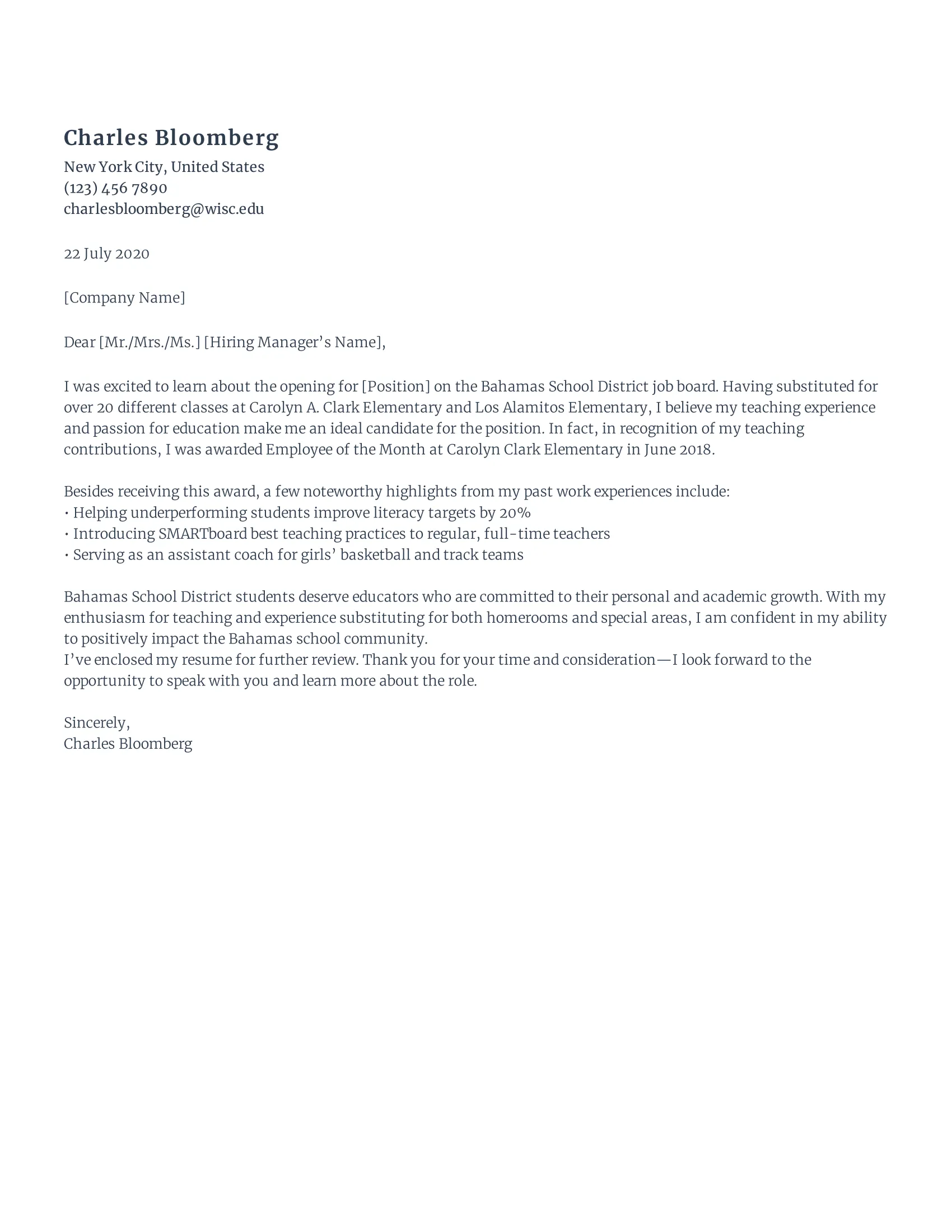Crafting Your First Substitute Teacher Cover Letter
Landing your first substitute teaching position starts with a strong cover letter. It’s your chance to make a great first impression and showcase why you’re the ideal candidate. This guide provides the top 5 tips to help you craft a compelling cover letter that highlights your skills, experience, and enthusiasm. A well-written cover letter isn’t just a formality, it’s a strategic tool. It allows you to go beyond your resume, offering a glimpse into your personality, teaching philosophy, and what makes you unique. For first-time substitute teachers, this letter is crucial to showing your potential and eagerness to make a positive impact on students’ lives and contribute to a school’s educational environment. Focus on clarity, conciseness, and a genuine expression of your commitment to education.
Highlighting Your Skills
Your cover letter needs to spotlight the skills that make you a great substitute teacher. Think beyond the basics and consider what you bring to the classroom. Prospective employers are looking for individuals who can step in and seamlessly continue the learning process. Emphasize abilities that demonstrate your capacity to manage a classroom effectively, engage with students, and adapt to different teaching environments and subject matters. Furthermore, showcase how your experience and abilities align with the specific requirements and values of the school or district you are applying to, setting you apart from other candidates.
Classroom Management Expertise
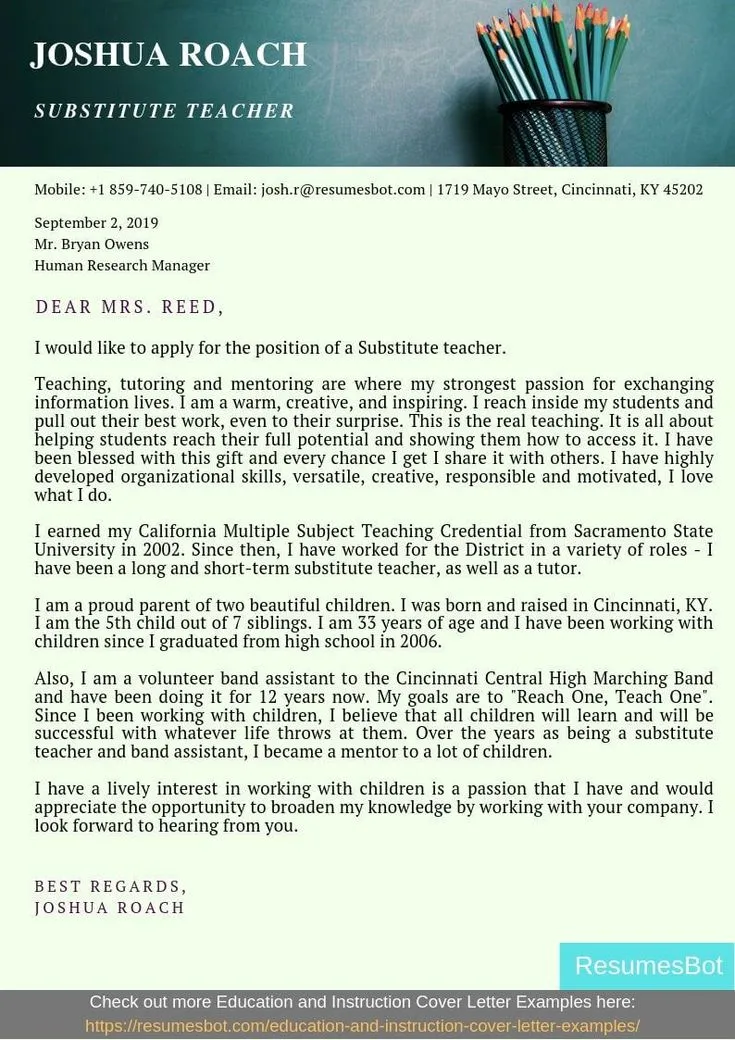
Effective classroom management is a cornerstone of successful substitute teaching. Highlight any training or experience you have in maintaining order, managing student behavior, and creating a positive learning environment. This includes your ability to implement classroom rules, handle disruptions calmly, and encourage student participation. Mentioning specific strategies, such as using positive reinforcement, establishing clear expectations, or employing specific management techniques, can demonstrate your preparedness and competence. Showing that you’re adept at creating a structured, respectful, and engaging atmosphere is key.
Communication Prowess
Communication is key. Highlight your ability to communicate effectively with students, teachers, and parents. This involves active listening, clear and concise instructions, and the ability to adapt your communication style to different audiences. Mention instances where you successfully communicated with students, addressed concerns from parents, or collaborated with other teachers. Effective communication ensures that you can convey information clearly, understand needs, and maintain a productive and supportive environment within the classroom.
Adaptability and Flexibility
Substitute teaching demands adaptability and flexibility. Show that you can quickly adjust to new situations, different curricula, and various student needs. Provide examples of how you’ve adapted to unexpected changes, such as last-minute lesson plan adjustments or student behavioral issues. Highlight your willingness to learn new things, embrace challenges, and think on your feet. Emphasizing your ability to remain calm, resourceful, and flexible in a dynamic environment can greatly impress potential employers.
Showcasing Relevant Experience
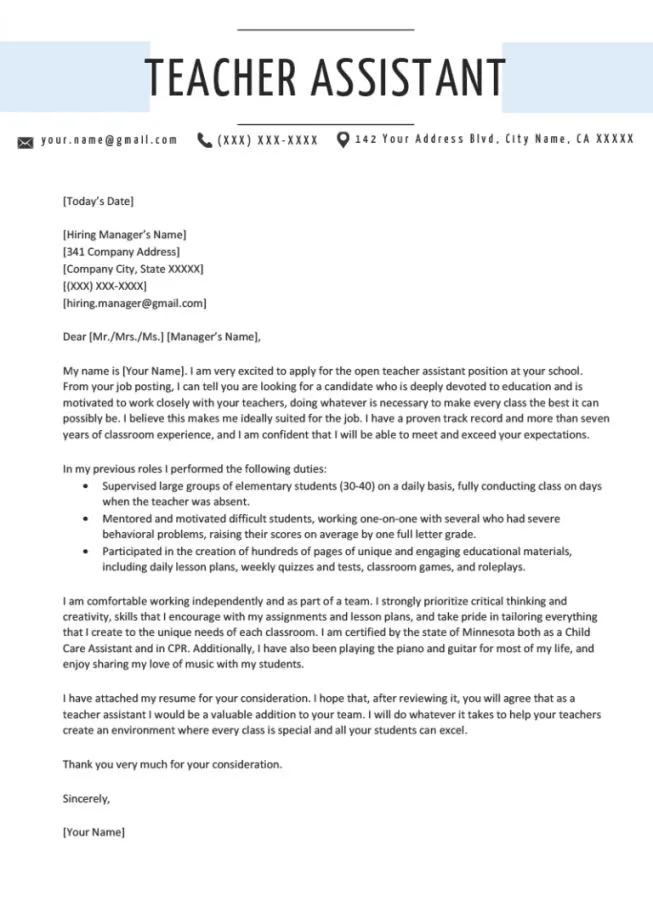
Your experience, whether in education or another field, should be clearly presented in your cover letter. Focus on highlighting relevant experiences and skills, and show how these experiences have prepared you for the role of a substitute teacher. This will help the hiring manager quickly assess your suitability and potential contributions to their educational environment, giving you a competitive edge.
Previous Teaching or Volunteer Experience
If you have any previous teaching experience, even on a volunteer basis, be sure to highlight it. This could include tutoring, teaching assistant roles, or leading workshops. Describe your responsibilities and the skills you developed, such as lesson planning, classroom management, and student assessment. If you have worked with children in any capacity, such as in a camp or mentoring program, include details about your role and the impact you had on the children. This demonstrates your practical knowledge and your passion for working with students.
Transferable Skills from Other Fields
If you are transitioning from a different career, focus on transferable skills. These are skills that can be applied in various roles. Some examples are communication, organization, time management, problem-solving, and leadership. Frame these abilities in a way that demonstrates their relevance to substitute teaching. For example, project management skills can translate into managing lesson plans, while strong communication can facilitate interactions with students and staff. The goal is to showcase your potential to excel in the role, leveraging all the experiences you’ve gathered to date.
Formatting and Presentation
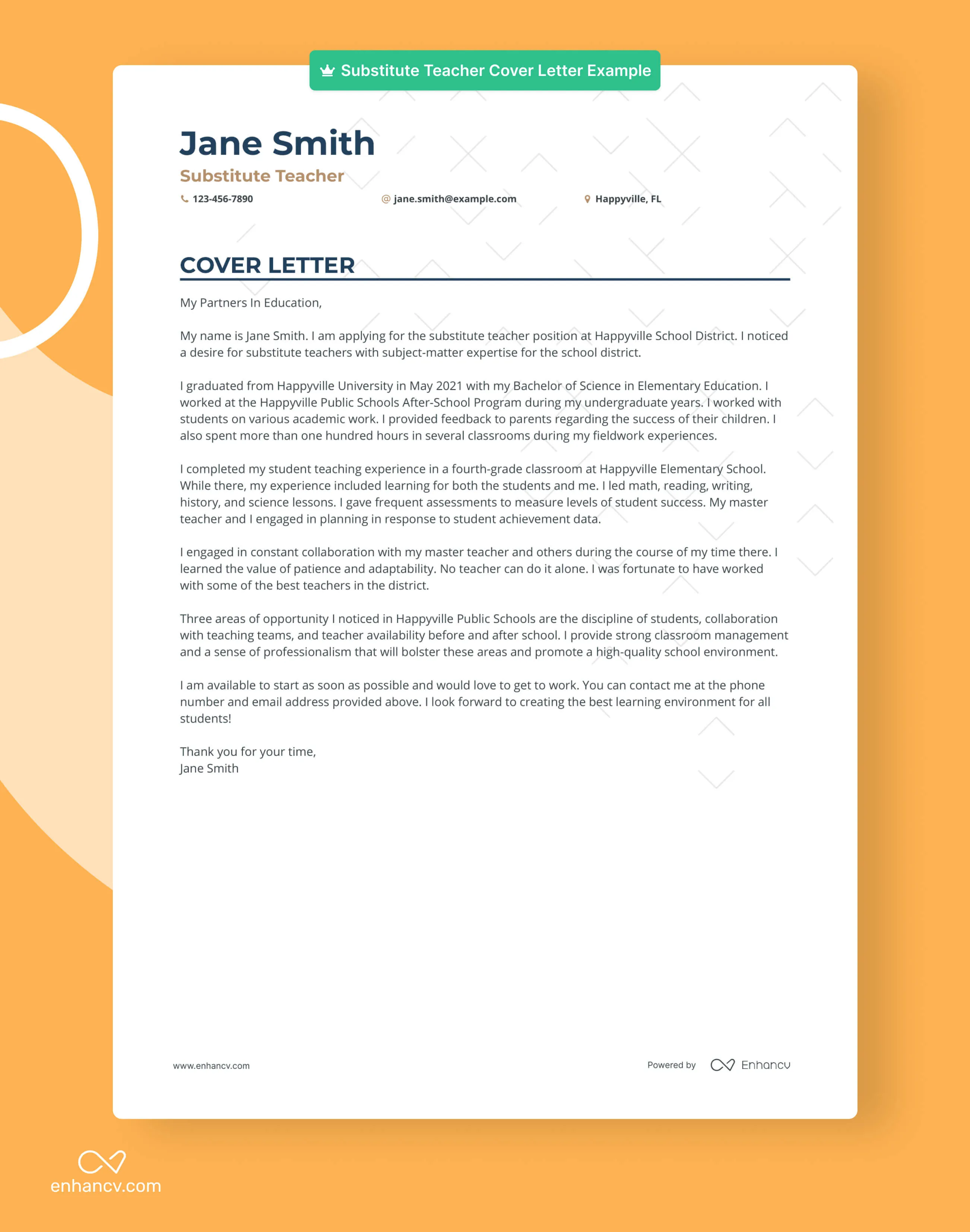
The way you present your cover letter can be as important as its content. It’s a direct reflection of your professionalism and attention to detail. A well-formatted cover letter is easy to read and visually appealing, which ensures that the reader can focus on your qualifications. Ensure you follow the standard formatting, and pay attention to your word choice to make a strong impression.
Professional Tone and Language
Maintaining a professional tone is key. Use clear, concise language and avoid slang or casual expressions. Address the hiring manager by name whenever possible and use a respectful and formal tone throughout the letter. Proofread carefully to eliminate any grammatical errors or typos. A well-written letter that demonstrates professionalism gives a positive first impression and shows that you take the application process seriously.
Clean and Concise Formatting
Keep your cover letter concise, ideally one page. Use a standard font such as Times New Roman or Arial, with a font size between 10 and 12 points. Use clear headings and bullet points to break up the text and make it easier to read. Ensure there’s adequate white space to make your letter visually appealing. Prioritize the most important information to ensure that your qualifications are quickly and effectively communicated to the reader.
Including a Compelling Call to Action
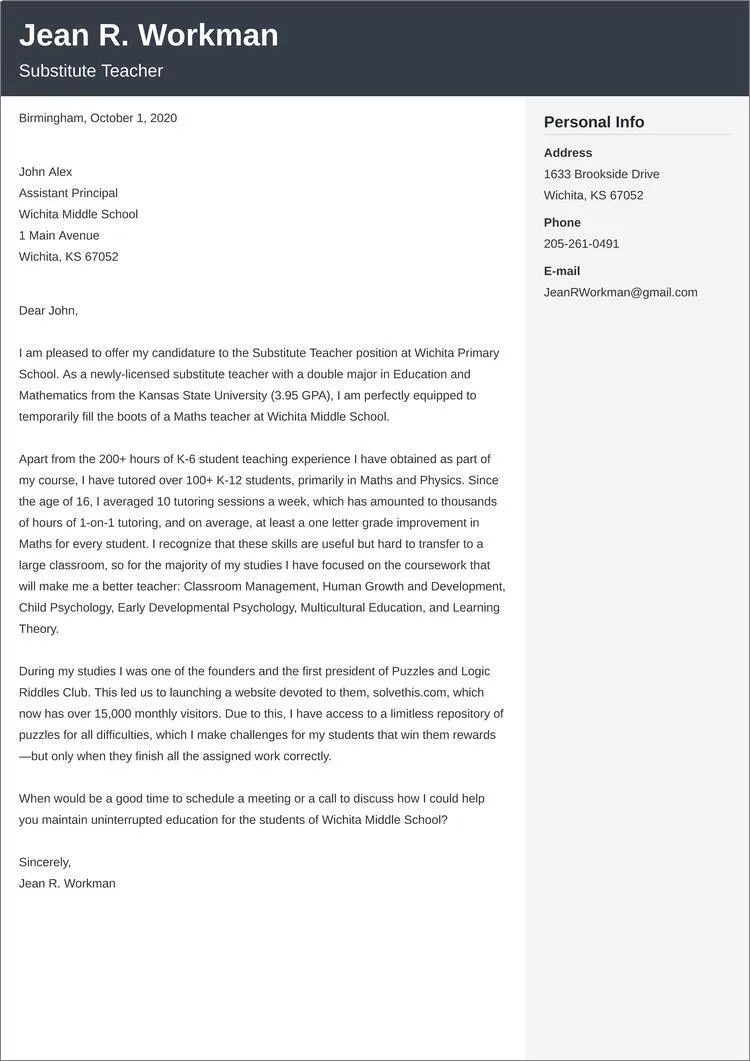
A strong cover letter does more than just list your qualifications; it also encourages the reader to take action. Providing a call to action makes it easy for the reader to see your enthusiasm and initiative. Your call to action will help you stand out by showing you are eager to be a part of their team. It helps to make sure you get a call for the interview.
Expressing Enthusiasm and Availability
End your letter by expressing your genuine enthusiasm for the position and the school district. Mention your availability and eagerness to discuss your qualifications further in an interview. This shows that you are ready to contribute and demonstrates your initiative. This also makes it clear you are serious about the opportunity and gives the hiring manager a sense of your eagerness to join the team.
Providing Contact Information
Make it easy for the hiring manager to contact you by including your phone number and email address in your cover letter. Ensure that your email address is professional. Double-check all your contact information to avoid any errors. Providing multiple ways to reach you ensures you don’t miss any opportunities. It also indicates your commitment to the application and your attentiveness to the details.
Proofreading and Editing
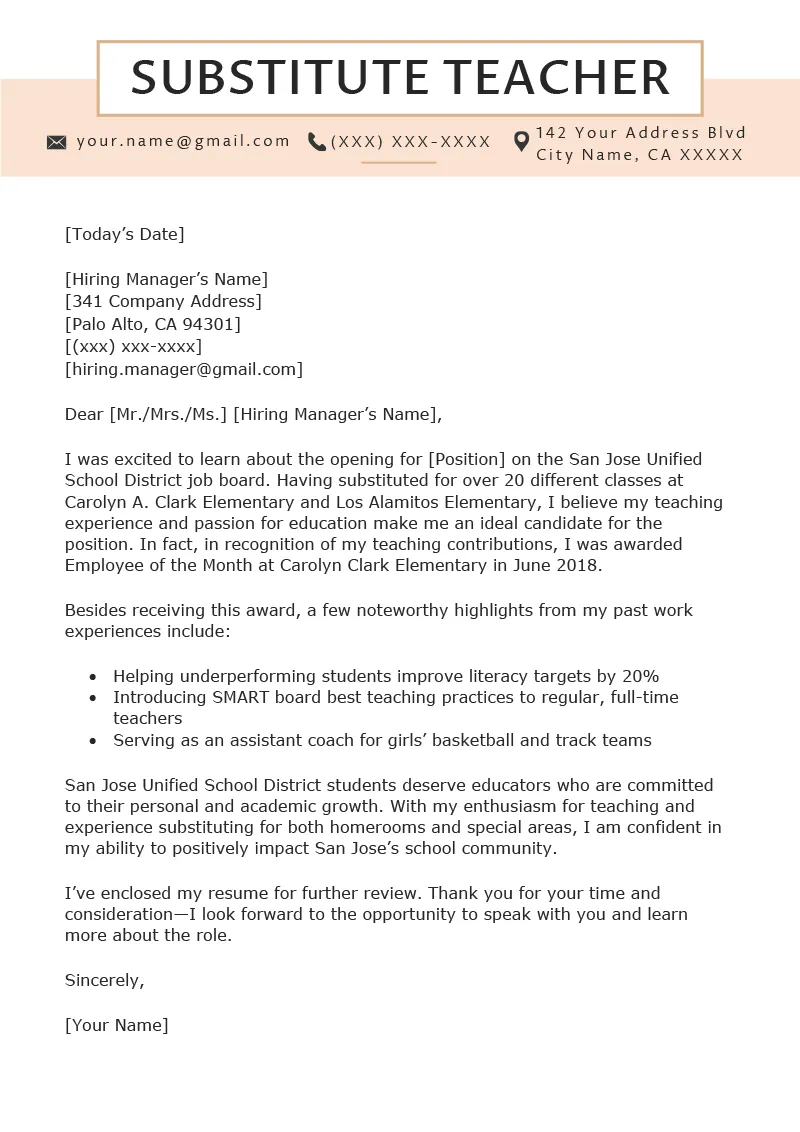
Before you send your cover letter, thoroughly proofread and edit it. Errors can undermine your credibility and professional image. Taking this extra step makes sure you put your best foot forward. It’s crucial to show that you are meticulous and pay attention to detail. This will also demonstrate your strong commitment to your application and your ability to present yourself in the best possible light.
